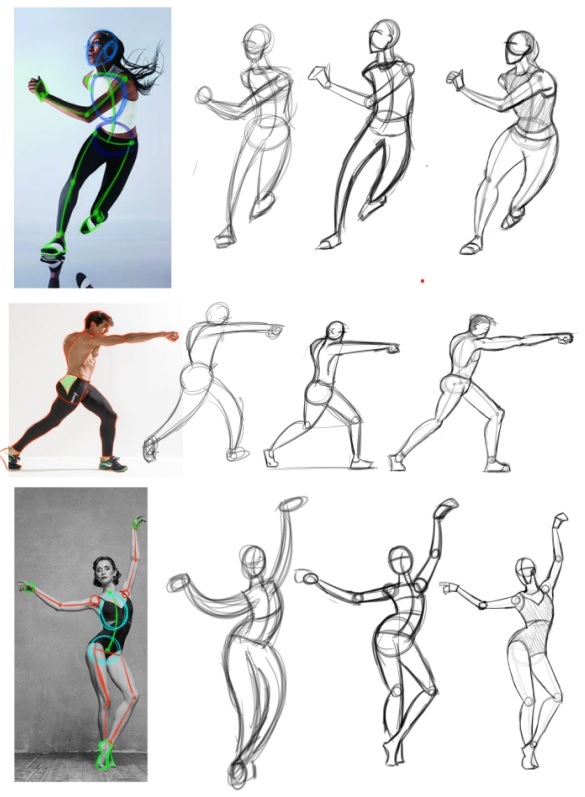Term 2 - Facial Anatomy
It has been.... 2 months since I last made a post here. Don't worry, I haven't quit art; rather, it's the first time I encountered my art problems and took my time slowly; albeit not very consistent. It's important to note that my drawing head skill is still sub-par but I have learnt essential concepts required to keep practicing drawing facials over time.
Head Construction
This is pretty easy for me since I learnt the Loomis Head method before. But I haven't got much experience constructing it so I spent most of the time just practising.
The biggest challenge is setting up the circle inside the sphere to differentiate the front and side plane. But Proko explained pretty well on it.


Ear Construction
This is where the challenging part starts but at a small scale. There are technical terms for each ear parts (e.g. Lobule) but the more important facts is the steps taken to deconstruct an ear in order to reconstruct it again, preferably in a different angle.
If you ask me how to draw a ear, I will just say "Draw a semi-heart, draw a '9' on inside it, draw a circle at the bottom and connect them". I don't remember the technical words for key parts of the ear but I know enough visually and conceptually to deconstruct it. But I know in the future that I have to eventually learn the anatomy term for each part.

Nose Construction
The first big challenges. This is the part where I legit questioned myself "Am I good at doing art at all?" I learnt a lot not only on nose construction but also how I learn art overall and integrate other people methods to draw particular parts.
I will admit straight-up that I now don't use Marc's method of drawing nose. It makes sense at the end but when practising with it, I struggle to even finish drawing the nose at all! I eventually remembered that some methods doesn't fit for ALL people so I decided to browse Youtube, watched other artists explained how they deconstruct noses and not fully switches to their methods but rather have a mix of steps that makes sense for me and allows me to draw nose more easily.
I think this learning method is very important to me as I hardly ask or question why the artist does this way or this other way. But now, not only I ask question but also try in a blend of different methods to see if it works for me or not. So yeah, don't be afraid to try new methods and mix some!
So I used Marc's method with a mix from the following 2 videos.

Mouth Construction
This one is much easier than the nose construction as there's not many too key mouth parts to remember and deconstructing was pretty easier; albeit minor trouble when deconstructing from a 3/4 views when one side of mouth overlaps the other side.
I didn't do much practice so I don't have any images of my mouth practices. Sorry lmao.
Eye Construction
Same as Mouth Construction, pretty easy to go through as there's not much parts involved aside from our eye sphere and our eye shape which looks like a quadrilateral. Aside from that, I also didn't do much practice on eye but I have a good idea enough to deconstruct it.
Combine it all together
So the money challenge. Put them all together at one. The biggest challenge is not constructing it but rather shading it to give depth and perspective. Like I said on Photoshop (II ) post, I just started on shading and I mostly draw very quickly and sloopily at the last stage so my shading is mostly done with a big air brush and go around like a maniac.
Here's my first 2 complete facial anatomy work so far.

Overall
Like I said, I learnt a lot not only on facial anatomy but also how to find new ways of drawing if one way of drawing is frustrating you. We are all individuals and we have different ways of drawing key parts with the same understanding of the anatomy.
So even if I quit art school somewhat in the future, the one thing I take is look at something from a new perspective. Try to do the same thing but in a different methods and see if it works out for you.
That's all from me. See you in the next 3 months as I'm doing Perspective 2, lmao.
NOTE: I found this on Discord which is a perfect summary of this video on facial anatomy. Don't know who made this but credit to them for sharing! 










 Gesture drawing is also the hardest part for me as well. I also feel like it improves my speed considerably when working on other practice. Keep up the good work!
Gesture drawing is also the hardest part for me as well. I also feel like it improves my speed considerably when working on other practice. Keep up the good work!



















